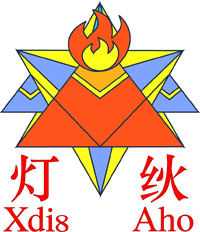Han-reform:修订间差异
小无编辑摘要 |
|||
| 第3行: | 第3行: | ||
== Difference from solemn script reform == | == Difference from solemn script reform == | ||
Many debates related to the national language and script problem occurred in China during the 20th century. Some early opinions were highly unrealistic, such as the suggestion by some Chinese students in Paris in 1908 that Chinese people should speak Esperanto instead of Chinese. However, after further discussion, some scientific agreement was reached, such as | Many debates related to the national language and script problem occurred in China during the 20th century. Some early opinions were highly unrealistic, such as the suggestion by some Chinese students in Paris in 1908 that Chinese people should speak Esperanto instead of Chinese<ref>The remark was refuted by Zhāng Tàiyán in his essay ''Refutal for China’s adoption of Esperanto'' ({{lang|zh|駁中國用萬國新語說}}). Zhāng pointed out that the advocators simply think that ideographic writing are for uncivilized people and phonetic writing are for civilized people.</ref>. However, after further discussion, some scientific agreement was reached, such as vernacular (‘living’) language-based writing, incorporating political and technical loanwords, etc. This agreement indicated that script reform should be done through combined efforts instead of being invented in a garage, which further boosted the discussion and eventually resulted in Putonghua, Pinyin and Simplified Chinese characters. | ||
By the 1990s, the focus on script reform decreased, largely due to changes in social ideology | By the 1990s, the focus on script reform decreased, largely due to changes in social ideology but also because of standardization of Chinese and the widespread use of computers. People no longer sought to reform the script and some ‘new’ passionate individuals emerged as Han-reformists who advocated various strange inventions. | ||
== Notes == | |||
<references /> | |||
2023年3月1日 (三) 20:32的版本
Han-reform (hàngǎi 汉改, named vaguely on purpose, is a set of eccentric movements concerning Chinese language, its script, or both. These proposals are often deemed eccentric due to their impractical features. Shidinn and Zhou script are two examples of Han-reform.
Difference from solemn script reform
Many debates related to the national language and script problem occurred in China during the 20th century. Some early opinions were highly unrealistic, such as the suggestion by some Chinese students in Paris in 1908 that Chinese people should speak Esperanto instead of Chinese[1]. However, after further discussion, some scientific agreement was reached, such as vernacular (‘living’) language-based writing, incorporating political and technical loanwords, etc. This agreement indicated that script reform should be done through combined efforts instead of being invented in a garage, which further boosted the discussion and eventually resulted in Putonghua, Pinyin and Simplified Chinese characters.
By the 1990s, the focus on script reform decreased, largely due to changes in social ideology but also because of standardization of Chinese and the widespread use of computers. People no longer sought to reform the script and some ‘new’ passionate individuals emerged as Han-reformists who advocated various strange inventions.
Notes
- ↑ The remark was refuted by Zhāng Tàiyán in his essay Refutal for China’s adoption of Esperanto (駁中國用萬國新語說). Zhāng pointed out that the advocators simply think that ideographic writing are for uncivilized people and phonetic writing are for civilized people.
